Following the advice of our hosts at The Red Tree House, we pretty much spent our entire first day in Mexico City walking. I have become quite a big fan of arriving in an international destination late in the evening (after excessive travel time). Exhaustion leads to a good night’s sleep and you wake up refreshed and ready for it all. Topping that off with a lot of walking makes combating jetlag a breeze. And so we set off from our cozy little spot in upmarket Condesa and headed towards Bosque de Chapultepec – 1,000 acres of parkland in the centre of Mexico City. This spot is such a draw card for residents and tourists as it isn’t just a gigantic park; it is also home to some pretty amazing and important museums.
Parque Mexico
On our way, we strolled through the Parque Mexico at the centre of what was once the old hippodrome, only a couple of blocks from The Red Tree House. In Parque Mexico we happened upon what appeared to be a bit of a doggie daycare setting (or obedience class, not sure which) – a delightful surprise for the animal lovers that we are. There were about 30 dogs of all shapes, sizes and breeds being supervised by four handlers. The dogs were unbelievably impressive in their behaviour; all lined up, laying on the ground on the very edge of the path with their leads out in front of them, quietly waiting to be called on for their ‘work’ with the handler. So remarkable. And that was something we noticed immediately – there are so many dogs in this city, but they are well looked after and so very well behaved. But it must be pointed out that we are staying in a VERY nice residential area, so there is always someone raking leaves or sweeping paths (and the dog-owners appear to clean up their pooch’s ‘bizz’).
National History Museum in the Castillo de Chapultepec
We had only been outside our apartment for 30 minutes, so it was time to move on and we continued our walk to Chapultepec. We began our exploration of this magnificent park with the Castillo de Chapultepec, which houses the Museo de Nacional de Historia. This castle was only built in 1785 and used to be the summer retreat of the viceroy, but its lavish ornamentation and furnishings make it the perfect home for the National History Museum – the opulence of the previous Emperor a drawcard in itself. From the terrace of the castle you can see all of Mexico City…or so we have been told – the day we were there, it was hidden by the pollution of a city of 21 million! Countless murals of national hero Diego Rivera are exhibited throughout the museum, and thus began our fascination for the work and the man. And it is easy to get your Rivera ‘fix’ in Mexico City – his work is everywhere! (Click here for more on Rivera and Kahlo)
National Museum of Anthropology
Just across a busy road from the Castillo was the Museo Nacional de Antropologia – reputedly one of the best anthropological museums in the world. As we were getting peckish at 1:30pm (early for Mexicans), we had lunch in the museum’s café (as recommended by the DK top 10 of Mexico City). Unfortunately the food disappointed and was overpriced but was balanced by our waiter Marco’s enthusiastic charm and helpfulness. In all fairness, the clientele in museum cafés are tired and hungry and happy to pay a bit extra.
I’ve been told the National Anthropological Museum is one of the main reasons people visit Mexico City, and it really is extraordinary, not only in the breadth, diversity and richness of its collection, but also for its design. The exhibition halls surround a courtyard containing a gigantic slab of concrete that canter-levers, umbrella-like, over the patio, and a water-feature sprays down from a single robust and intricately carved column underneath.
The overwhelming scope of the exhibition halls can be daunting, especially for first-time visitors. But we managed to follow the sound suggestions of our hosts, guide books and new-found friends at our B&B and restricted our visit to specific sections of interest, which prevented us from being completely overwhelmed, and enabled us to enjoy to rooms where we chose to spend our time. Another visit is needed to do this place justice.
Museum of Modern Art
The Museo de Arte Moderno is snuggled in a corner of the park between the Castillo and the Anthropological Museum. For contemporary art buffs, this museum offers an extensive range of 20th century Mexican and Latin American artists’ works in its permanent collection. Frida Kahlo’s The Two Fridas is the star of this collection, but there were many other pieces by Kahlo, Rivera and Siqueiros to absorb (and slightly disturb) us.
Of the temporary exhibitions we found the touring Lee Miller one enthralling. I had no idea of the scope and degree of this woman’s talent, or how influential she was. Her journey from Vogue model to photojournalist via contemporary art photographer was quite extraordinary. Her work had such impact on photography as an artform, and her original, evocative and striking images are very much emulated today.
Across the circular, cream and golden foyer awaited a quirky sculpture exhibition, slightly spooky in lighting and content. The jagged edges and spiky protrusions of the ceramics left us with a disturbed vibe and desire to move faster towards the exit.
Soumaya Museum
A short taxi ride away, north west of the Bosque de Chapultepec is the Mueso Soumaya, and what an extraordinary thing it is. Its architecture I will call ‘space odyssey surrealism’ – a gigantic yacht keel, shimmering, alien-like in the sun. Carlos Slim is the man who had the money to commission a purpose-built museum to house his private collection (he was ranked richest man in the world from 2010-2013). Quite touchingly, he named the museum after his wife who died in 1999.
We only had an hour and a half in this wondrous place, which was not at all enough to do it justice to the scope and quality of the exhibits. The top floor (of 6!) alone was enough to keep us there for hours. Here lives the largest collection of Rodins outside of France. There was also the works of Salvador Dali, Picasso, Tamayo, Siqueiros and Rivera. The second floor was all about Venice, Canelleto included, so the top two floors were the most enthralling for me. As their website states, it is “a journey across six centuries of art.” It really was a shame to have to rush through the remaining floors – religious art, ivory, watches, Asian wood-carvings…it was a blur.
Friends who are big fans of Mexico City had warned us about the profusion and brilliance of its museums, but we still weren’t prepared for what we experienced. And these ones were just the beginning; the glut of Diego Rivera and Frida Kahlo was yet to come!
Our Mexico City story continues…
Read our full Mexico City story here:
Part 1 (current): Bosque de Chapultepec and its museums
Part 2: Diego Rivera and Frida Kahlo
Part 3: San Angel to Coyoacan
Part 4: Centro Historico
Part 5: Teotihuacan
Mexico City Accommodation: The Red Tree House
Click on any image below to view as gallery
- Emperor and empress busts, Museo Soumaya, Mexico City
- ‘Shush’ nun painting, Museo Soumaya, Mexico City
- Carved tusks, Museo Soumaya, Mexico City
- Asian ivory dragon carving, Museo Soumaya, Mexico City
- Carved ivory task, Museo Soumaya, Mexico City
- Carved ivory puzzle ball, Museo Soumaya, Mexico City
- Detail of last supper carving, Museo Soumaya, Mexico City
- Wooden carving of the Last Supper, Museo Soumaya, Mexico City
- Walking marble naked man, Museo Soumaya, Mexico City
- Close up of paper sculpture, Museo Soumaya, Mexico City
- Miniature paper sculpture, Museo Soumaya, Mexico City
- Venice scene, Museo Soumaya, Mexico City
- The view down into the Venice floor, Museo Soumaya, Mexico City
- The veil in alabaster, Museo Soumaya, Mexico City
- Close up of women reading together, Museo Soumaya, Mexico City
- Bronze caricatures, Museo Soumaya, Mexico City
- Dali’s chest of drawers sculpture, Museo Soumaya, Mexico City
- Lady Godiva bronze sculpture, Museo Soumaya, Mexico City
- Dali’s melting clocks sculptures, Museo Soumaya, Mexico City
- Breathless madonnas, Museo Soumaya, Mexico City
- Now, where do I start?…Museo Soumaya, Mexico City
- Rodin reclining woman sculpture, Museo Soumaya, Mexico City
- Top floor of the Museo Soumaya, Mexico City
- Bath time at the river mosaic in the Museo Soumaya, Mexico City
- Museo Soumaya, Mexico City
- Self-serve condiments, Mexico City
- Street food stalls, Mexico City
- Tarantula in a field of cacti ceramic in the Museum of Modern Art, Mexico City
- Plate of octopus ceramic at the Museum of Modern Art, Mexico City
- Kahlo’s ‘The Two Fridas’ at the Museum of Modern Art, Mexico City
- O’Gorman’s ‘Multiple Self Portrai’ at the Museum of Modern Art, Mexico City
- Gallery in Museum of Modern Art, Mexico City
- ‘Las Meninas’ homage at the Museum of Modern Art, Mexico City
- Golden dome of large foyer of the Museum of Modern Art, Mexico City
- Staircase of larger foyer at the Museum of Modern Art, Mexico City
- Outdoor sculpture at the Museum of Modern Art, Mexico City
- The smaller of the two foyers at the Museum of Modern Art, Mexico City
- Detail of Boy Heroes Monument, Bosque de Chapultepec
- The Boy Heroes monument at Bosque de Chapultepec
- Photo ops for kids, Bosque de Chapultepec
- Lion Gate entrance to Bosque de Chapultepec
- Special taxi, Mexico City
- Foyer of the National Museum of Anthropology, Mexico
- Courtyard waterfall, National Museum of Anthropology, Mexico
- Courtyard roof of the National Museum of Anthropology, Mexico
- Swearing and oath, National Museum of Anthropology, Mexico
- High adorned stone head, National Museum of Anthropology, Mexico
- Impressive profile, National Museum of Anthropology, Mexico
- Detail of stone circle carving, National Museum of Anthropology, Mexico
- The Sun Stone, National Museum of Anthropology, Mexico
- Diorama of an ancient market place, National Museum of Anthropology, Mexico
- Stone sculpture with face tattoo, National Museum of Anthropology, Mexico
- Interior, National Museum of Anthropology, Mexico
- Clay snake entanglement, National Museum of Anthropology, Mexico
- Singing sculpture, National Museum of Anthropology, Mexico
- How Teotihuacan would’ve once looked, National Museum of Anthropology, Mexico
- Mayan clay figures, National Museum of Anthropology, Mexico
- Mayan-inspired mural, National Museum of Anthropology, Mexico
- Diorama in the National Museum of Anthropology, Mexico City
- Squirrel in Bosque de Chapultepec
- Snack time in Bosque de Chapultepec, Mexico City
- NIc on the balcony of Castillo de Chapultepec
- Stained glass window depicting the goddess Diana, Castillo de Chapultepec
- Manicured gardens on the terrace of the Castillo de Chapultepec
- Misty view of Mexico City from the Castillo de Chapultepec
- Blue bedroom in the Castillo de Chapultepec
- Sitting room in the Castillo de Chapultepec
- Cherub detail on the carriage in the National History Museum, Castillo de Chapultepec
- Ornately decorated carriage in the National History Museum, Castillo de Chapultepec
- Contempt for the bourgeoisie shown in the murals at the National History Museum, Castillo de Chapultepec
- Armed revolutionaries mural in the National History Museum, Castillo de Chapultepec
- Oppressed workers mural in the National History Museum, Castillo de Chapultepec
- The mural room at the National History Museum, Castillo de Chapultepec
- Looking down and up on the staircase of the Castillo de Chapultepec, Mexico City
- Glass dome clock, National History Museum, Castillo de Chapultepc
- National hero mural in the National History Museum, Castillo de Chapultepec
- Internals of National History Museum, Castillo de Chapultepec
- Malachite magnificence in the National History Museum, Castillo de Chapultepec
- First floor staircase of the Castillo de Chapultepec, Mexico City
- The museum shop in the Castillo de Chapultepec, Mexico City
- Rivera mural detail, National History Museum, Mexico City
- Nic looking at one of Rivera’s revolution murals, Nacional History Museum, Mexico City
- Bronze of the Mexican eagle killing the snake, National History Museum, Mexico City
- Groundfloor staircase of the Castillo de Chapultepec, Mexico City
- Not sure if this shop sells or repairs pianos, Mexico City
- Street art, Mexico City
- Lovely walking path down the middle of Avenida Amsterdam, Mexico City
- Obedient students in the Parque Mexico dog school
- Dog training in Parque Mexico
- Prickly ‘chokos’ at Condesa market stall, Mexico City
- Capsicums (or peppers) at the Condesa market stall, Mexico City
- Sulky giant sculpture, Mexico City

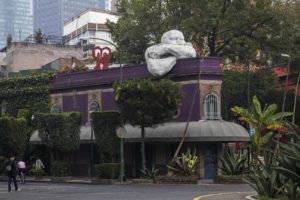









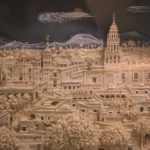
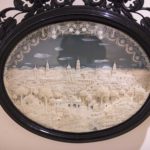




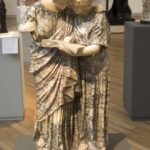

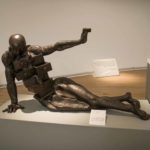

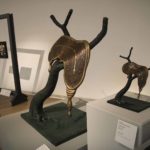






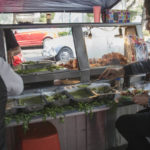
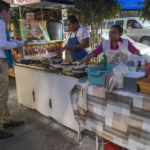
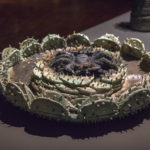
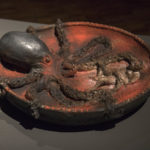

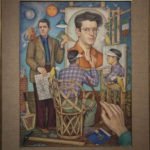

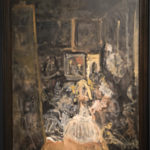
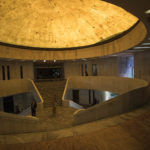
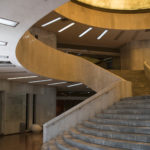
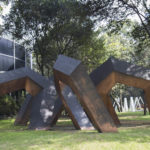
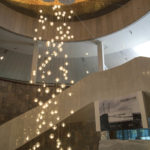


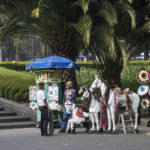
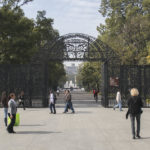



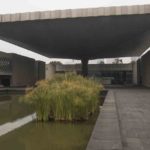


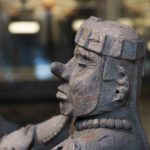

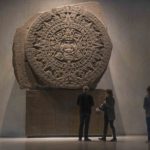
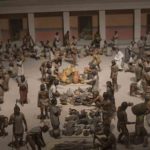
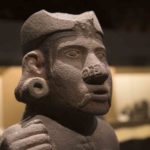



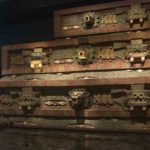








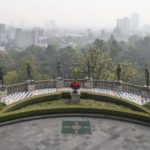




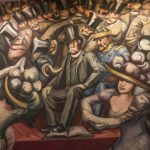
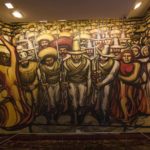


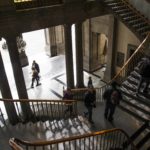

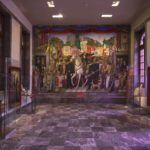


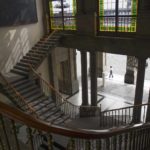
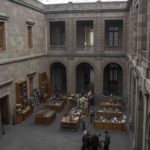

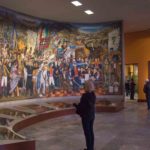



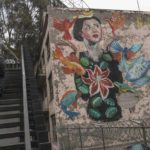





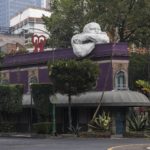
Pingback: Mexico City (Part 2) – Diego Rivera and Frida Kahlo – bontaks travels
Pingback: Mexico City (Part 3) – San Angel to Coyoacan – bontaks travels
Pingback: Mexico City (Part 4) – Centro Historico – bontaks travels
Pingback: The Red Tree House, Mexico City – bontaks travels
Pingback: Mexico City (Part 5) – Teotihuacan – bontaks travels